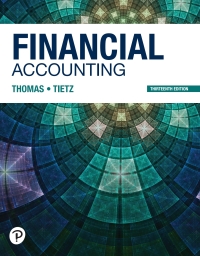Estimating Share Value Using the DCF Model Following are forecasts of sales, net operating profit after tax (NOPAT), and net operating assets (NOA) as of December 31, 2018, for Humana.
| | Reported | Horizon Period | |
| $ millions | 2018 | 2019 | 2020 | 2021 | 2022 | Terminal Period |
| Sales | $56,912 | $57,766 | $58,632 | $59,512 | $60,404 | $61,008 |
| NOPAT | 2,492 | 2,542 | 2,580 | 2,619 | 2,658 | 2,684 |
| NOA | 4,032 | 4,097 | 4,158 | 4,221 | 4,284 | 4,327 |


Estimating Share Value Using the DCF Model Following are forecasts of sales, net operating profit after tax (NOPAT), and net operating assets (NOA) as of December 31, 2018, for Humana. Reported Horizon Period Terminal $ millions 2018 2019 2020 2021 2022 Period Sales $56,912 $57,766 $58,632 $59,512 $60,404 $61,008 NOPAT 2,492 2,542 2,580 2,619 2,658 2,684 NOA 4,032 4,097 4,158 4,221 4,284 4,327 Answer the following requirements assuming a discount rate (WACC) of 7.8%, a terminal period growth rate of 1%, common shares outstanding of 135.6 million, net nonoperating obligations (NNO) of $(6,129) million, which is negative because Humana's nonoperating assets exceed its nonoperating liabilities, and no noncontrolling interest (NCI) on the balance sheet. (a) Estimate the value of a share of Humana's common stock using the discounted cash flow (DCF) model as of December 31, 2018. Instructions: Round all answers to the nearest whole number, except for discount factors, shares outstanding (do not round), and stock price per share. Round discount factors to 5 decimal places. Round stock price per share to two decimal places Use your rounded answers for subsequent calculations. Use a negative sign with your NNO answer. Reported Forecast Horizon Terminal Period 2018 2019 2020 2021 2022 0 0 0 0 0 0 0 0 0 0 0 0 0 0 0 ($ millions) Increase in NOA FCFF (NOPAT - Increase in NOA) Discount factor [1/(1+rw)t] Present value of horizon FCFF Cum present value of horizon FCFF $ Present value of terminal FCFF Total firm value 0 0 0 0 0 0 0 0 MINO Instructions: Round all answers to the nearest whole number, except for discount factors, shares outstanding (do not round), and stock price per share. Round discount factors to 5 decimal places. Round stock price per share to two decimal places. Use your rounded answers for subsequent calculations. Use a negative sign with your NNO answer. Reported Forecast Horizon 2018 Terminal Period 2019 2020 2021 2022 0 0 0 0 0 0 0 0 0 0 0 0 0 0 0 0 0 0 0 ($ millions) Increase in NOA FCFF (NOPAT - Increase in NOA) Discount factor [1/(1+rw)t] Present value of horizon FCFF Cum present value of horizon FCFF $ Present value of terminal FCFF Total firm value NNO Firm equity value $ Shares outstanding (millions) Stock price per share $ 0 0 0 0 0 0 (b) Humana (HUM) stock closed at $307.56 on February 21, 2019, the date the 10-K was filed with the SEC. How does your valuation estimate compare with this closing price? What do you believe are some reasons for the difference? Ostock prices are a function of many factors. It is impossible to speculate on the reasons for the difference. OOur stock price estimate is slightly higher than the HUM market price, indicating that we believe that HUM stock is slightly undervalued. Stock prices are a function of expected NOPAT and NOA, as well as the WACC discount rate. Our higher stock price estimate might be due to more optimistic forecasts or a lower discount rate compared to other investors' and analysts' model assumptions. Our stock price estimate is slightly higher than the HUM market price, indicating that we believe that HUM stock is slightly undervalued. Stock prices are a function of expected NOPAT and NOA, as well as the WACC discount rate. Our higher stock price estimate might be due to more pessimistic forecasts or a higher discount rate compared to other investors' and analysts' model assumptions. Our stock price estimate is slightly higher than the HUM market price, indicating that we believe that HUM stock is slightly overvalued. Stock prices are a function of expected NOPAT and NOA, as well as the WACC discount rate. Our higher stock price estimate might be due to more pessimistic forecasts or a higher discount rate compared to other investors' and analysts' model








